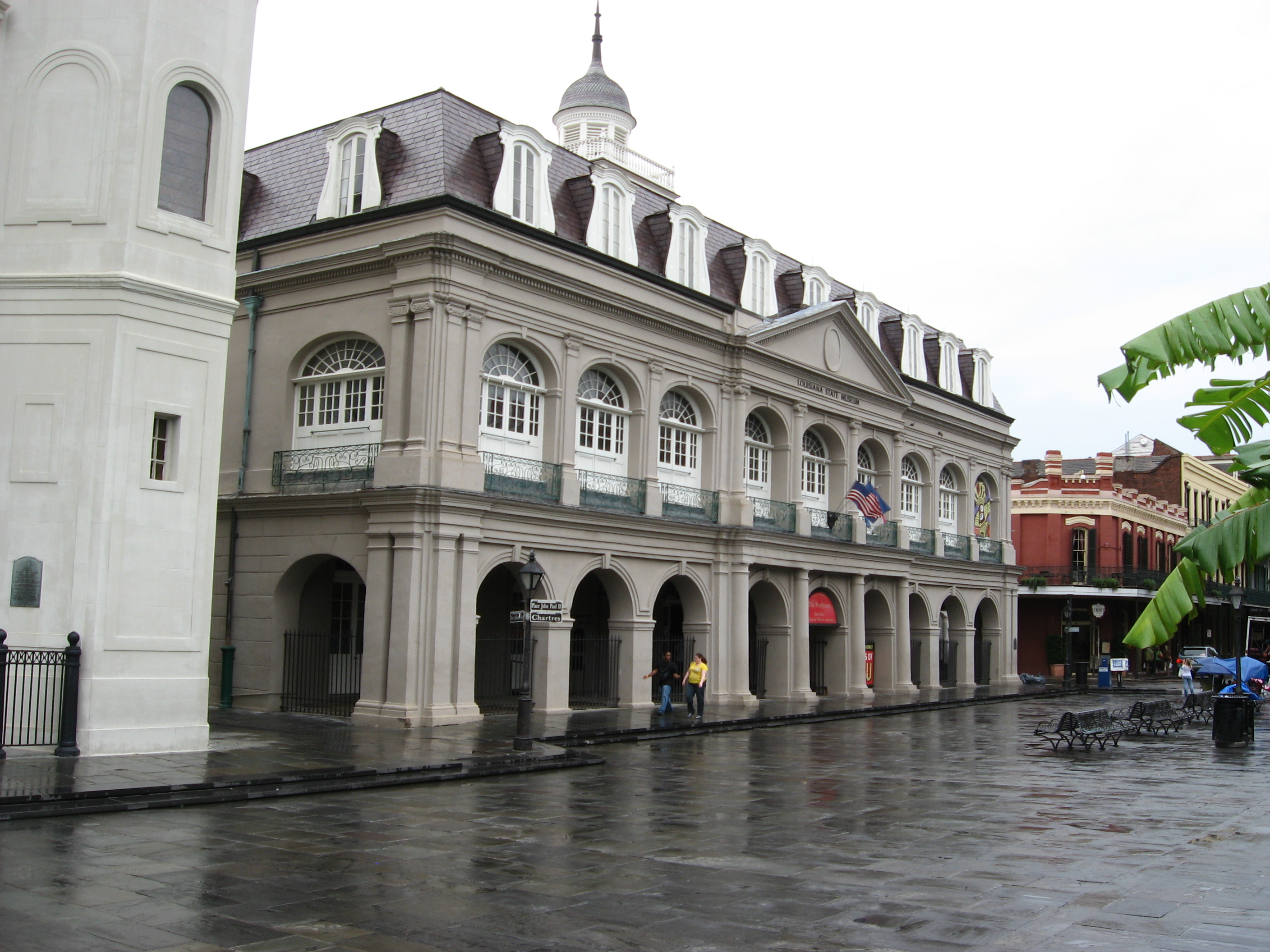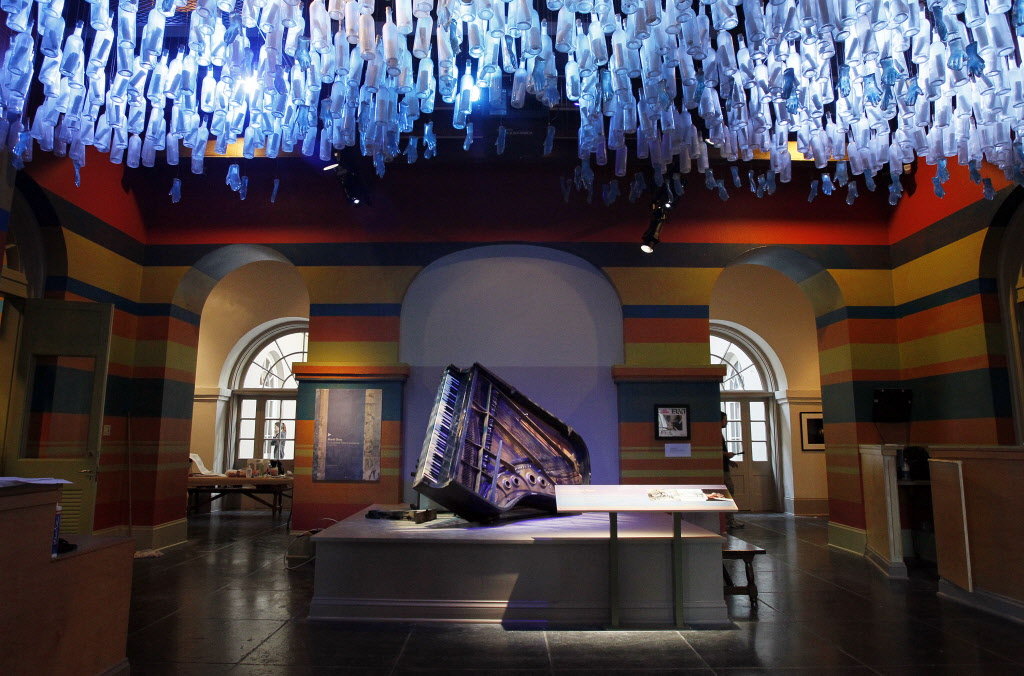When you visit New Orleans, you’ll find that the locals are willing to talk to you about most anything. The food, the bars, second line parades, Mardi Gras, King Cakes, ghosts, voodoo, pirates and the New Orleans Saints are all part of the past and current history of the town and open game for conversation. We were warned before visiting by some friends that there is one topic that a visitor shouldn’t bring up – Hurricane Katrina.
I’m sure that now that the “no-call” in the NFC Championship game against the Rams will be something else to avoid for a while as well but that’s a fresh wound.

Katrina happened in 2005 and the city is still recovering. We picked up tidbits of info here and there but we were still interested to learn about the hurricane, the impact it had on the people of the city and the how and why it happened in the first place.
Fortunately, my college buddy, who is a recent transplant to the city, informed us of a museum exhibit about Katrina. I knew he lived through the aftermath of Superstorm Sandy and he knew we lived through three hurricanes in Florida in 2004 (Charley, which traveled right over our house, Frances and Jeanne), so when he recommended we visit, we made it a point to go.
The exhibit is located in The Presbytère. This building is part of the Louisiana State Museum and is located in Jackson Square. If you’ve ever been to New Orleans, you’ve seen this building.

We didn’t know previously that The Presbytère and The Cabildo, the buildings alongside Saint Louis Cathedral, are both parts of the Louisiana State Museum system. Since 2010, The Presbytère has housed an exhibition called Living with Hurricanes: Katrina & Beyond.
I do want to mention that you need to pay an admission fee to the museum. Adults have to pay $6. Yeah, that’s a whole six dollars. I felt guilty asking for my AAA 10% discount so we only paid $5.40 (I had no idea of the cost when I read about the discount, or I never would have asked for what turned out to be 60 cents off).
As you walk in the building, you’re presented with a stark image showing what damage the storm did to the city and to its soul.

That’s a piano found in Fats Domino’s house after the storm. While walking through the exhibit, you’ll also see “a Coast Guard rescue basket and seats from the heavily damaged Louisiana Superdome where thousands of people sought refuge and rescue. The objects serve as touchstones in recalling the days after the storm.”
The hardest part of the entire exhibit for me to go through was the first room. They have a sound system set up to replicate the sound of a hurricane while news broadcasts from during the storm play in the background. Everyone talks about how a tornado sounds like a train, but a hurricane just sounds like wind. Blowing wind. For hours upon hours. Unrelenting. Never ending. Rain and wind. Your house makes sounds you’ve never heard before. Creaks. Whistles. You hear a tree fall and wonder if it hit your car or your house, but you can’t go outside to look. That’s what hunkering down during a hurricane sounds like.
Imagine if, after that, the water started to rise. You’re forced up the second floor or the attic. Maybe you were lucky and remembered to put an ax up there to hack through the roof so you could be rescued. Maybe you didn’t.
Personally, I found touring this museum to be similar to when I visited the September 11th Memorial in New York. I didn’t take any pictures during our entire time there. I just didn’t feel right to do it. Over 1,400 people died during that storm and these were relics that memorialized the event and not some items to share on my Instagram.
Don’t get me wrong – the entire museum isn’t a downer. The whole second floor is devoted to something which is, even more, a part of New Orleans history. Mardi Gras.
Mardi Gras: It’s Carnival Time in Louisiana offers a window into the annual celebration and riotous rituals of Mardi Gras, a festival that is inextricably woven into Louisiana’s way of life and whose roots extend deep into the Middle Ages. There are parade floats to climb, costumes to see and historical throws on display as well as rare glimpses into the secretive social club society from which modern-day Mardi Gras krewes evolved. And it’s not a party without music: Mardi Gras albums, records, sheet music and more are also part of the collection.
Final Thoughts
A visit to The Presbytère is a great introduction to the dichotomy that IS New Orleans. The pain and pleasure that surrounds the town. After going through the Katrina exhibit, you’ll understand why you should be grateful if anyone shares their stories about that time of the city’s history. They’re giving you a glimpse into the most traumatic time of the city’s, and probably their own, life. Listen to the story. Understand what it was like to live through that. Understand why someone would stay, or come back, or move here now. Only then, will you begin to understand the city of New Orleans.
Like this post? Please share it! We have plenty more just like it and would love if you decided to hang around and clicked the button on the top (if you’re on your computer) or the bottom (if you’re on your phone/tablet) of this page to follow our blog and get emailed notifications of when we post (it’s usually just two or three times a day). Or maybe you’d like to join our Facebook group, where we talk and ask questions about travel (including Disney parks), creative ways to earn frequent flyer miles and hotel points, how to save money on or for your trips, get access to travel articles you may not see otherwise, etc. Whether you’ve read our posts before or this is the first time you’re stopping by, we’re really glad you’re here and hope you come back to visit again!
This post first appeared on Your Mileage May Vary

4 comments
I’m a New Orleans native. Locals are absolutely fine with talking about Katrina – just like every other topic. I would say, though, that if a visitor brings the subject up, be prepared for a long story. The storm affected people differently and the recovery was arduous and for most people took several years. For anyone who lived through it, there is no simple 30 second answer to “How were you affected by the storm?”
It’s not a taboo subject, but know that once you get someone talking about Katrina, they’re going to go on for a while.
And yes, the Rams are still a very sore subject and will be for some time 😉
Thanks for sharing. I didn’t mean to say it’s a taboo subject but more that you just shouldn’t walk up to a local and ask about it. For those who don’t want to start that conversation, a well curated museum on the topic is the next best thing.
Great post 😁
These other commenters are right, but thank you for the sensitivity. I’d just say if you come visit us in New Orleans and want to ask us about Katrina, it’s OK just make sure you feel like listening for a while. There are a million different versions of it, and all of them are true.